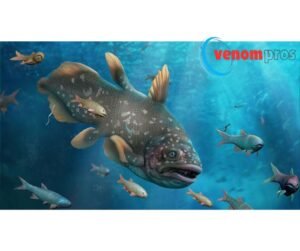
The Unique Venom of the Cone Snail: A Marine Marvel
At first glance, the cone snail might seem like a gentle sea creature with its beautifully spiraled shell and slow, deliberate movements. However, this seemingly unassuming mollusk hides a powerful secret: one of the most complex and intriguing venom systems found in the marine world. With over 500 species spread across the warm waters of the Pacific and Indian Oceans, cone snails are more than just beautiful shells—they are sophisticated predators with venom that has significant implications for both marine biology and medical science.
The Cone Snail’s Hunting Strategy
Cone snails belong to the genus *Conus*, and despite their diverse sizes, colors, and patterns, they all share a common trait: their venom. These snails are active hunters rather than passive grazers. They prey on a variety of marine organisms, including fish, worms, and other invertebrates. The cone snail’s method of hunting is both fascinating and deadly.
Equipped with a specialized harpoon-like tooth known as a radula tooth, the cone snail delivers its venom with remarkable precision. When the snail strikes, it injects venom through this tooth, which quickly immobilizes its prey. This technique ensures that the prey cannot escape, allowing the cone snail to feed safely in Marine Marvel.
Medical Breakthroughs: From Venom to Medicine
Prialt is based on the venom of the geographic cone snail (*Conus geographus*) and is used to manage severe chronic pain, especially in patients who do not respond to traditional pain medications. Unlike opioids, which can be addictive and have a range of side effects, Prialt offers a different approach to pain relief. It works by blocking specific calcium channels involved in pain signaling, providing effective relief without the risk of addiction.
The development of Prialt represents a significant breakthrough in pain management. But the applications of cone snail venom go beyond pain relief. Researchers are investigating its potential for treating various neurological disorders, such as epilepsy and Alzheimer’s disease. The venom’s ability to modulate nerve signals and neurotransmitter release makes it a promising candidate for developing new treatments for these challenging conditions in Marine Marvel.
The Science Behind Cone Snail Venom
To fully appreciate the significance of cone snail venom, it’s important to understand its chemical composition and how it interacts with biological systems. Conotoxins are small peptides that bind specifically to receptors and ion channels in the nervous system. This high degree of specificity allows scientists to study their effects on different physiological processes.
For example, conotoxins that target sodium channels provide insights into the mechanisms of pain and muscle function. By studying these toxins, researchers can develop new drugs that selectively target pain pathways without affecting other functions. Similarly, conotoxins that modulate calcium channels offer potential for treating conditions related to neurotransmitter release and synaptic transmission in Marine Marvel.
Conservation and Future Prospects
Despite the exciting potential of cone snail venom, these fascinating creatures face significant threats. Habitat destruction, pollution, and climate change are impacting marine environments around the world, including the ecosystems where cone snails thrive. Protecting these habitats is crucial for ensuring the survival of cone snails and the continued exploration of their venom’s potential.
Conservation efforts are essential to preserve the delicate balance of marine ecosystems and to safeguard the rich biodiversity they support. By protecting these environments, we can ensure that cone snails and other marine organisms continue to thrive and contribute to scientific discovery in Marine Marvel.
The Road Ahead
As research on cone snail venom continues to advance, we are likely to see even more exciting developments in the future. Advances in biotechnology and molecular biology are enhancing our ability to analyze and utilize the complex compounds found in cone snail venom. This research has the potential to revolutionize the treatment of various medical conditions and to uncover new therapeutic possibilities.
Our oceans are home to a vast array of unique and unexplored organisms, each with its own potential for scientific and medical breakthroughs. Investing in marine research and conservation is vital for uncovering these hidden treasures and harnessing their benefits for humanity in Marine Marvel.
In Conclusion
By continuing to study and appreciate the cone snail’s venom, we gain a deeper understanding of the intricate relationships between marine life and human health. Protecting these remarkable creatures and their habitats ensures that we can explore their full potential and continue to make groundbreaking discoveries. The cone snail, in all its elegance and danger, is a testament to the wonders of the natural world and the endless possibilities that lie within it.
Also read this;>“The Science of Poisons: How Toxicologists Detect and Neutralize Harmful Substances”






